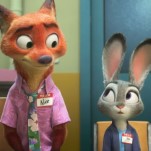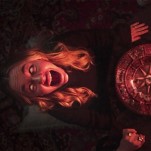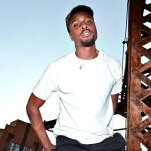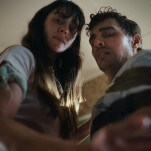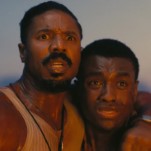Viceland’s Dark Side of the Ring Puts Wrestling’s Sordid Side on Full Display
Photo: Scott Romer/Viceland
We’re in the middle of the latest professional wrestling boom, but it’s not taking place in the ring. Between last month’s Kenny Omega documentary in Canada, last year’s Andre the Giant documentary on HBO, and 2017’s 30 for 30 on Ric Flair, the real lives of wrestling greats have become a focus of mainstream fascination. That trend continues with Viceland’s Dark Side of the Ring, a series of one-hour documentaries that premieres this week.
Wrestling is a perfect topic for documentaries because of the very nature of the business. It’s a weird, violent mix of show business and sports that for most of its history was run as a big con on the public. Its annals are full of liars, carnies and criminals, and to succeed generally requires an extreme personality and an ample amount of arrogance. The wrestling scene of the 1980s and 1990s is especially well-suited for this kind of attention: Not only does it fit snugly into the constantly whirring nostalgia industry, soothing today’s middle-aged adults who are always yearning for their youth, but that era of wrestling was also a free-for-all of drugs and partying that ended in tragedy for far too many wrestlers. It the last time when kayfabe, the code of secrecy that protected the real nature of pro wrestling since its earliest days, still made it rare to see through the line between show and reality. Wrestling is an absurd business built on lies and full of larger-than-life characters, and that’s why we’ve seen so many backstage exposés lately.
Dark Side of the Ring isn’t as tasteful as those Andre or Flair movies. It feels more like an offshoot of a show like Unsolved Mysteries, with shadowy re-creations of scenes that may or may not have happened in real life. It’s a more salacious and stylized take on the subject matter, and although that might frustrate serious wrestling fans who’ve been spoiled by 30 for 30 and HBO, that lurid appeal is an appropriate fit for both the subjects and time periods being discussed.
Thankfully, Viceland avoids a persistent problem with mainstream coverage of wrestling. It doesn’t act like Vince McMahon’s WWF (which is now known as WWE) is the only game in town. Only two of the six episodes are primarily about WWF wrestlers or events, with a third (about the Fabulous Moolah’s controversial control of the women’s wrestling scene) covering a decades-long story that involves McMahon’s territory both before and during his ownership. Documentaries about Bruiser Brody, Gino Hernandez and the Von Erich brothers (whose untimely deaths were also featured in a 30 for 30 short) might not have the marquee value of the episodes about Randy Savage or WWF’s Montreal Screwjob, but the fact that those stories are slightly more obscure to most wrestling fans makes them more interesting today.
-

-

-

-

-

-

-

-

-

-

-

-

-

-

-

-

-

-

-

-

-

-

-

-

-

-

-

-

-

-

-

-

-

-

-

-

-

-

-

-


